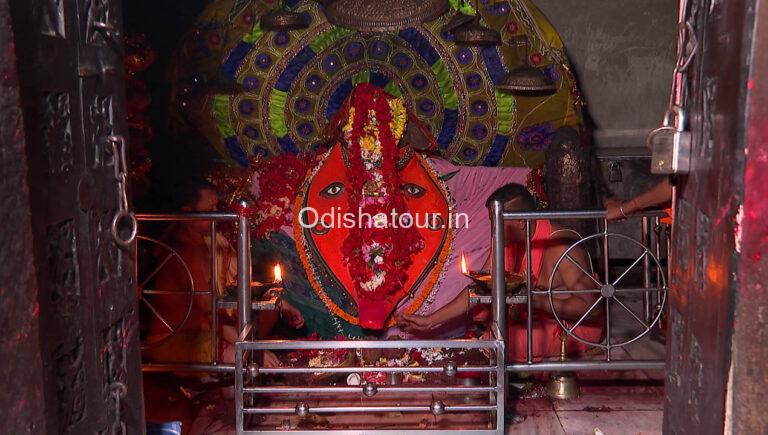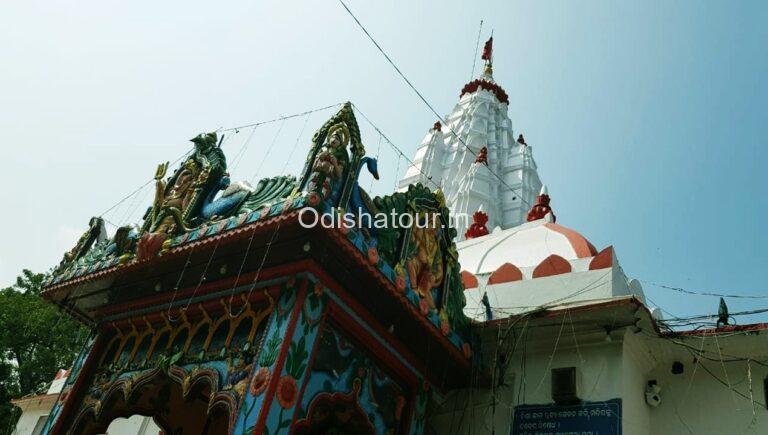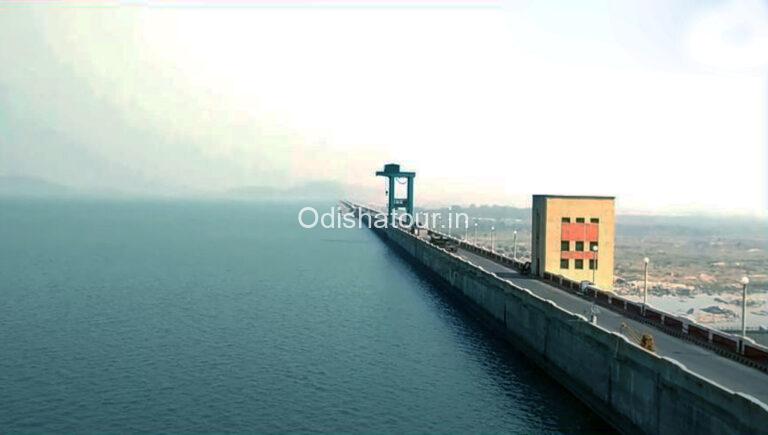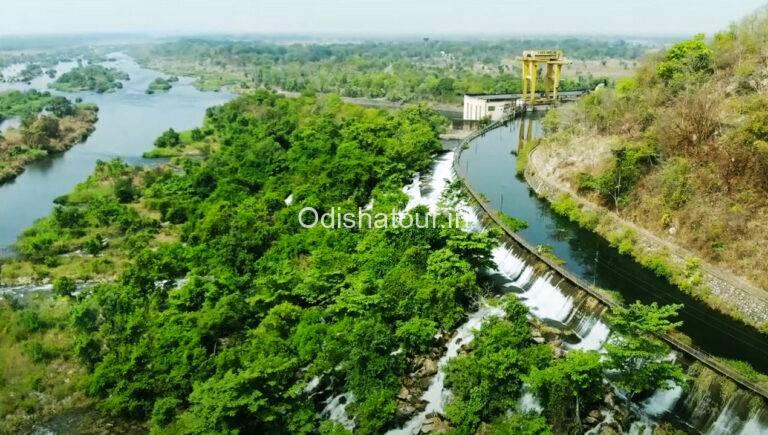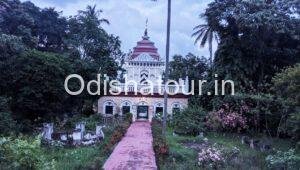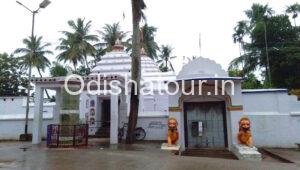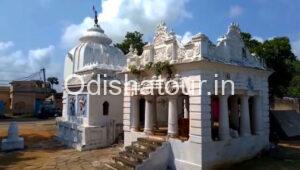The Samaleswari Temple is a famous Hindu temple located at a 3 km distance from Sambalpur Town on the bank of the river Mahanadi. It is dedicated to Goddess Samaleswari, the presiding deity of the region, who is considered to be an incarnation of Maa Shakti (the Goddess of Power). This temple holds significant cultural, religious, and historical importance, particularly among the people of western Odisha. The mother goddess Samaleswari has been worshipped since ancient times as Jagatjanani, Adishakti, Mahalaxmi, and Mahasaraswati. The region in which the temple is situated has a rich cultural heritage. The Sambalpur region has been popularly known as Hirakhanda since ancient times. Ptolemy has described the place as Sambalak. Samaleswari Mandir is a famous tourist place near Sambalpur.
Maa Samalei Temple is not just a religious monument but a cultural symbol for the people of western Odisha. It represents the traditions, rituals, and spiritual beliefs that have been passed down through generations. Nuakhai is the main harvest festival of this temple. People mark the occasion by offering the newly harvested rice to the goddess. The festival is accompanied by great fanfare and celebration all across the region. Lakhs of devotees throng the temple to see the blessings of the goddess. The benevolence of the goddess spreads across Western Odisha up to Chhattisgarh. Maa Samalei Temple is worshipped in various forms across the state and is one of the famous Shakti Peethas of Odisha. The temple is a major pilgrimage site and a vital centre for the cultural heritage of Odisha, drawing devotees throughout the year.
Useful Information on Samaleswari Temple
- The temple’s structure is an example of traditional Odia temple architecture. The main shrine houses the stone idol of the goddess, adorned with ornaments and beautiful attire.
- The temple dates back to the 16th century and was built by the Chauhan dynasty, which ruled Sambalpur during that period. The rulers were devout followers of Goddess Samaleswari, and they constructed the temple as a symbol of their devotion and a spiritual centre for the people.
- In the local folklore and belief systems, Samaleswari is considered the presiding deity of Sambalpur and the Ista Devi (personal deity) of many families.
- The shrine sanctorum is relatively simple but powerful in spiritual significance. The idol of Maa Samaleswari is carved from black stone and is adorned with vibrant clothes and jewellery.
- Nuakhai is the most important festival associated with the Samaleswari Temple. It is celebrated in the month of Bhadra (August or September) as a harvest festival. On this occasion, new crops are harvested and offered to the goddess as a gesture of gratitude. It is a time of celebration for the entire region, with rituals, food, and cultural events.
- During Navaratri, the temple sees an influx of devotees who come to seek the blessings of the goddess during this auspicious period.
- Durga Puja, celebrated in the same period, is marked by elaborate rituals, decorations, and special prayers for nine days.
- This is an annual fair held in the Chaitra month (March or April). The festival attracts a large number of pilgrims and tourists who come to witness the rituals and participate in vibrant cultural programs.
- Maha Aarti is performed in the evening, and many devotees throng the temple to witness this important ritual.
- The temple is open to visitors from early morning until late in the evening, with the major rituals taking place during the early hours and evening aarti.
History of Samaleswari Temple
Though the origin of the goddess is still shrouded in mystery, one thing has been ascertained. Goddess Samaleswari was appropriated as the deity of Sambalpur by the Chouhan King Balaram Dev, who became the King of the region in 1542 AD. King Balaram Dev didn’t stop according to the title of Ista Devi (Goddess of the region); his veneration and devotion to the Goddess Samaleswari were instrumental in creating the cult of Goddess Samaleswari that we see today. The Maa Samaleswari temple is the main deity of western Odisha. According to a popular legend, one day while on a hunting expedition, King Balaram Dev saw his hunting dogs being repulsed by a hare. Stunned by the boldness of an otherwise submissive animal, the King was convinced that there was a divine power that held sway in his kingdom and that divine power came from Goddess Samaleswari. The main priest of the Samaleswari Temple is a descendant of the Chouhan dynasty.
Other Services
Destination Attractions, Destination Facilities, Transportation, Accessibility, How to Reach


